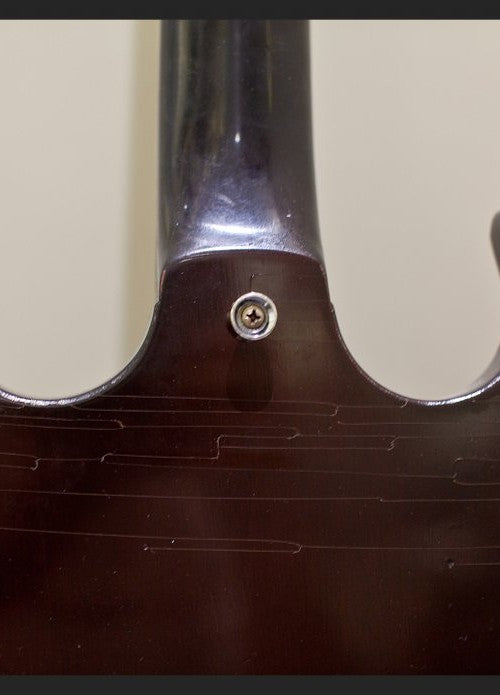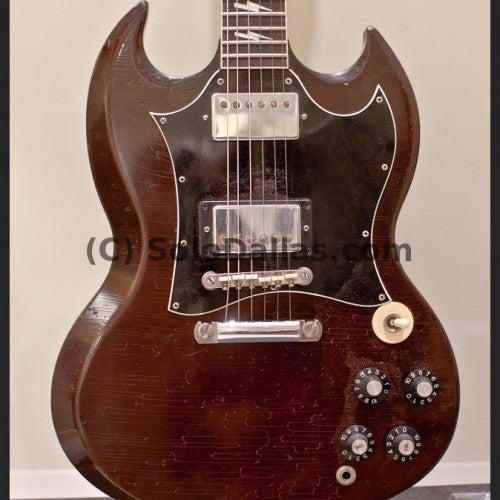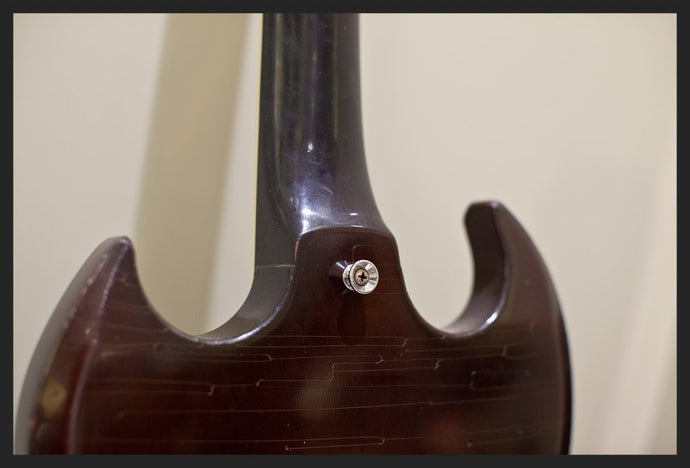This will be a post I will try to update as more info on the subject is known to me.
For now, I had shot these two pictures of some of my SGs in my new home studio (it’s actually a basement in my Roman flat).
I think it is striking to see the differences among all the neck joint types, i.e., “heels”.
Below, from left to right:
1961 Gibson SG Custom, 1971 Gibson SG Standard (note the cracked and then fixed heel: common on many SGs of any era), 1967 Gibson SG Standard, 1969 Gibson SG Standard, Angus Young Signature Custom Shop #37, 1970 Gibson SG Standard and last, 1964 Gibson SG Standard.

The heel on all Gibsons of the ’50s and ’60s are a critical feature that can help dating – approximately – the guitar. This is particularly true for mid to late 1960s Gibson Guitars, since those very years have serial numbers that are the most inconsistent of all times. Is it important? It may be important, since many sellers have “played” around this at times selling a guitar for higher values than it really was. So it is a feature to look into when considering purchase of Gibson guitars of that period.
On a side note, it is interesting to note how the current Gibson SG Standard “Angus Young” Custom Shop Signature has a heel looking almost identical to the 1961 Gibson SG Custom. This add to the story of “where does that Signature come from, exactly? What particular Angus’ SG inspired this replica?”. I still do not know clearly, and I would love your input if you have info on this.
Another interesting thing is that the heel change from 1967 (and 1968) to 1969 type introduced a change from one piece neck to three pieces neck (wood layer). This naturally introduces changes in the sound of the guitar, neck shape, playability and so on.
I don’t have a preference among all of these, it really doesn’t make a difference to me. I don’t even have a preference on tone – frankly – I love my 1971 Gibson SG Standard as I love the 1967 one.
They are rather different – and I will show you with a video/audio test, reviewing the guitars one by one – but these differences are all rather interesting.
I am being told that heels varied quite much during those very years – 1967-1971 – and that a 1969 Gibson SG standard might still sport the 1967 heel type (I have one coming to me just with that feature in fact!). This could/would mean that Gibson guys had laying around parts made during previous years – not uncommon at the time – and were assembling guitars with what they had as leftovers parts. Which makes these stories – and dating these guitars – even more fascinating, with lots of exceptions to the rules and so on.
Another image below, closing up on details.



